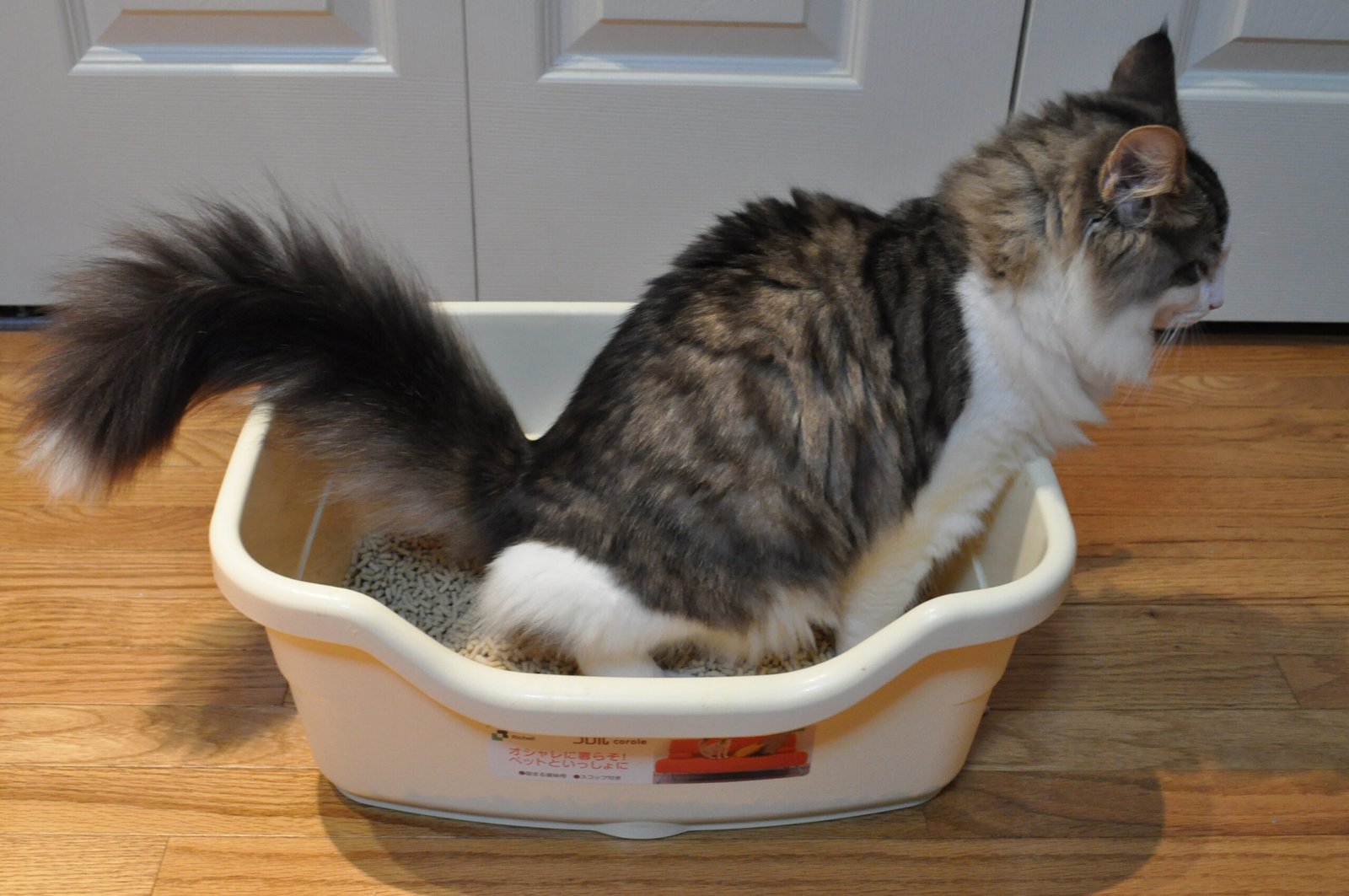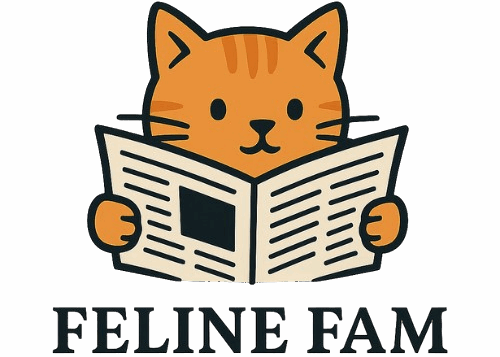Have you ever caught your cat gazing at you with those mysterious, unblinking eyes, or suddenly darting away for no clear reason? It’s easy to shrug off these little quirks as “just cat things.” But what if these signals are actually their way of speaking to you—whispering secrets about their needs and feelings? Ignoring these subtle messages can set off a chain reaction, silently transforming your loving feline into a ball of stress, or worse, leaving them quietly suffering while you’re none the wiser. Let’s unravel what really happens when we overlook our cats’ softest cries for help, and why tuning in could make all the difference for your whiskered friend.
Your Cat’s Body Language: More Than Meets the Eye

Cats are masters of body language, using every flick of their tail, twitch of their ears, and arch of their back to communicate. A slow blink can mean trust and affection, while a swishing tail might signal agitation. Many people think cats are mysterious or even aloof, but often, they’re just misunderstood. When we ignore these subtle cues, we miss out on their silent conversations. Over time, your cat may stop trying to communicate altogether, feeling unseen and unheard. Imagine if every time you tried to talk, your words floated away unheard—how lonely would that be? That’s the silent world your cat might retreat into if you keep missing their signals.
The Gradual Shift to Withdrawal

At first, ignoring your cat’s signals might not seem like a big deal. But as days go by, your cat could start to withdraw. Instead of greeting you at the door or curling up on your lap, they might hide under the couch or in a quiet corner. This isn’t just a “cat being a cat”—it’s often a sign they feel disconnected or even unsafe. Some cats may become less playful, avoiding interaction with you or other pets. Over time, this withdrawal can become a habit, making it harder and harder to rebuild trust. It’s a bit like a friend who stops calling after you ignore their texts—eventually, the silence becomes the new normal.
Stress and Anxiety Take Root

Ignoring a cat’s subtle signals can create a storm of stress inside them. Cats, by nature, are sensitive creatures who crave a sense of security in their environment. When their needs go unnoticed, their stress levels can spike. You might notice your cat grooming excessively, developing bald patches, or even displaying compulsive behaviors. Chronic stress can lead to a weakened immune system, making them more susceptible to illness. In some cases, stressed cats may start urinating outside the litter box, which is their way of crying out for help. The emotional toll on your cat is real, and it’s heartbreaking to watch if you start to notice the signs too late.
Unseen Physical Health Problems

Cats are notorious for hiding pain and illness. Ignoring subtle signals—like a change in posture, sudden disinterest in food, or excessive sleeping—can mean missing early warning signs of health problems. Illnesses like dental disease, kidney issues, or arthritis often show up as quiet changes in behavior rather than dramatic symptoms. By the time more obvious signs appear, the condition may have progressed significantly. Catching these signals early can mean the difference between a simple treatment and a long, expensive recovery. It’s a bit like ignoring a car’s warning light until it breaks down on the highway—by then, the problem is much harder to fix.
Behavioral Problems Can Snowball

When their signals are ignored, some cats don’t just withdraw—they act out. You might see more scratching on furniture, biting, or aggressive play. These behaviors aren’t just “bad habits.” They’re often desperate attempts to get your attention or vent their frustration. If left unchecked, these issues can escalate, turning your once-friendly kitty into a source of stress for the whole household. Addressing these behaviors early, by listening closely to your cat’s needs, can prevent them from spiraling out of control. It’s like catching a small leak before it floods the whole house—early attention makes all the difference.
Loss of Bond and Affection

Ignoring your cat’s subtle signals can quietly erode the bond you share. Over time, your cat may stop seeking out cuddles, playtime, or even the simple comfort of sitting nearby. This loss of connection can be heartbreaking for both you and your cat. It’s easy to take for granted the little moments—like a head bump or a gentle purr—but these are signs your cat trusts and loves you. If they stop reaching out, rebuilding that trust can take a long time. It’s like any relationship: without attention and care, it fades away.
Feeding and Appetite Changes

A cat’s appetite is a window into their well-being. Subtle changes in eating habits—like picking at food, eating less, or suddenly being fussy—are important signals. If ignored, these can point to underlying health issues, from dental pain to digestive problems. Over time, poor nutrition can lead to weight loss, muscle wasting, and a weakened immune system. Some owners overlook these signals, thinking their cat is just “picky.” But cats rarely change their eating habits without a reason. Paying attention could mean catching a serious problem before it spirals out of control.
Litter Box Avoidance and Hidden Messages

When a cat starts avoiding the litter box, it’s rarely just a matter of stubbornness. This behavior often signals distress, whether physical or emotional. Maybe the box is dirty, maybe your cat feels anxious, or perhaps there’s a urinary tract infection brewing. Ignoring these subtle messages can turn a small issue into a big, messy problem. Over time, your cat might associate the litter box with discomfort, making retraining difficult. Addressing the cause quickly can restore harmony and prevent ongoing accidents.
Over-Grooming and Skin Issues

Cats groom to keep themselves clean and comfortable, but excessive grooming is a loud whisper for help. When a cat is stressed, bored, or in pain, they may lick themselves raw. This can lead to bald patches, skin sores, or even infections. If ignored, the problem can get worse, leaving your cat in constant discomfort. Many owners mistake over-grooming for fussiness, but it’s often a sign that something deeper is wrong. Catching it early means less suffering and an easier path to recovery.
Sudden Aggression or Fearfulness

A cat who suddenly becomes aggressive or fearful isn’t just “acting out.” These are clear signals that something is wrong—maybe they’re in pain, scared, or feeling threatened in their environment. Ignoring these changes can make your cat feel trapped, leading to more extreme behaviors. Some cats may lash out at people or other pets, while others may hide for days at a time. Understanding and addressing the root cause can restore your cat’s sense of safety and peace.
Unexplained Vocalizations: The Cry for Help

Not all cats are chatty, but sudden changes in vocalization—like louder meows, yowling, or even growling—are worth paying attention to. These sounds can be a cat’s way of saying they’re in pain, confused, or anxious. Ignoring them may lead to more severe behavioral or health issues. Over time, your cat might stop trying to communicate altogether, feeling like their cries fall on deaf ears. Listening closely to these vocal cues can help you catch problems before they escalate.
Decreased Playfulness and Energy

A playful cat is usually a healthy, happy cat. If your feline friend suddenly loses interest in toys, games, or even chasing a bit of string, it’s a sign something’s amiss. This change can be due to boredom, depression, pain, or illness. Ignoring the shift may mean missing early signs of arthritis, dental pain, or even heart problems. Re-engaging your cat with gentle play and attention can help uncover hidden issues and restore their zest for life.
Changes in Sleeping Patterns

Cats are known for their love of sleep, but sudden changes in sleeping habits—like sleeping much more, or hardly at all—can signal trouble. Too much sleep can be a sign of depression, pain, or illness, while restlessness might indicate anxiety. Ignoring these changes can allow small problems to fester and become serious. Noticing and responding to shifts in your cat’s rest patterns helps ensure they stay healthy and comfortable.
Clinginess or Sudden Aloofness

Some cats become unusually clingy when they’re feeling anxious or unwell, following you from room to room or demanding constant attention. Others may do the opposite, becoming distant or avoiding contact. Both extremes are signals that something isn’t right in their world. If you ignore these changes, your cat may feel even more insecure. Addressing their needs quickly can help restore balance and reassure your furry companion.
Changes in Grooming Habits

Cats are usually meticulous about their appearance, but a sudden lack of grooming can be a red flag. This might point to pain, arthritis, or even depression. Without regular grooming, your cat’s coat can become matted, greasy, or full of dandruff. Ignoring this signal doesn’t just affect their appearance—it can lead to skin infections and discomfort. A quick check-in and a little extra care can make a big difference.
Overeating and Sudden Weight Gain

While some cats lose their appetite when something’s wrong, others may overeat, especially if they’re bored or stressed. Sudden weight gain can put your cat at risk for diabetes, arthritis, and heart disease. It’s easy to dismiss a growing waistline as “cute chubbiness,” but it often signals an underlying problem. Keeping an eye on your cat’s eating habits and body condition can help you spot issues early and keep your cat healthy.
Changes in Social Behavior With Other Pets

If your cat suddenly starts picking fights with other pets or withdrawing from social interactions, it’s worth paying attention. These changes can be signs of stress, illness, or even pain. Left unchecked, the tension can escalate, turning your peaceful home into a battleground. Addressing the root cause early can help restore harmony and keep everyone happier—furry and human alike.
Missing the Signs of Pain

Cats rarely cry out in pain, choosing instead to hide their discomfort. Subtle changes—like limping, reluctance to jump, or a change in posture—are their quiet cries for help. Ignoring these signals can allow pain to become chronic, deeply affecting your cat’s quality of life. Spotting and addressing pain early can mean faster recovery and a much happier cat. Think of it like noticing a limp in a friend; you wouldn’t just ignore it, would you?
Ignoring Signals: A Road to Heartbreak

In the end, overlooking your cat’s subtle signals can lead to a world of heartbreak—for both you and your feline friend. The bond you share could slowly unravel, replaced by confusion, mistrust, and even illness. Your cat depends on you to listen, even when they’re speaking in whispers. By tuning in to their body language, habits, and moods, you can protect their health, happiness, and the special connection you share. Would you have guessed that so much could be hidden in a twitch of a tail or a lingering glance?

Linnea is a born and bred Swede but spends as much time as possible in Cape Town, South Africa. This is mainly due to Cape Town’s extraordinary scenery, wildlife, and atmosphere (in other words, because Cape Town is heaven on earth.) That being said, Sweden’s majestic forests forever hold a special place in her heart. Linnea spends as much time as she can close to the ocean collecting sea shells or in the park admiring puppies.




